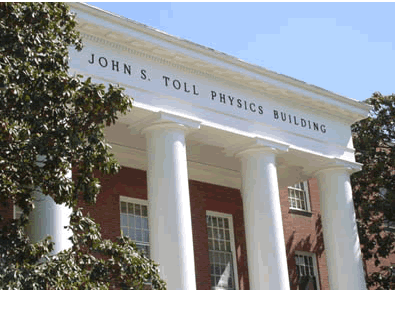
Projects for Physics 263H
Sections 0101-0105
Spring 2003

 |
Projects for Physics 263H Sections 0101-0105 Spring 2003 |
 |
![]()
To qualify for honors, you must submit a term paper on a topic related to this course. You may choose your own topic, subject to approval, or may choose from the list of suggested topics below. The paper is expected to be 10-15 typed pages and should include a general introduction or motivation, a discussion of the physical principles relevant to the phenomenon or the application of interest, estimates of the appropriate parameters, a review of experimental results or technological issues, and a conclusion. Term papers must also include a bibliography.
March 19: submit your proposed topic with a brief synopsis to jjkelly@physics so that I can judge its suitability
April 25: submit a rough draft
May 9: submit final paper
Maglev trains: it has been suggested that fast trains could exploit magnetic levitation of superconductors to eliminate friction and electromagnetic induction to propel the vehicle. Discuss the phenomenon of magnetic levitation and proposals for future applications. What is the present status of the technology and what are the prospects for practical deployment?
High-temperature superconductors: discuss the phenomenon of superconductivity and materials with relatively high transition temperatures. What are present and future applications? What problems now limit the usefulness of these materials and what research is being done to address those problems?
Magnetic monopoles: review experimental searches for magnetic monopoles. What might be some of the implications if monopoles were found?
Magnetic storage devices: how is information written to and read from magnetic tape or hard drives? What physics or technology limits the density of information storage? What new technologies are under development?
Optical storage devices: how is information written to and read from compact discs? How is that information encoded and what algorithms are used for error checking? What new technologies are under development?
Lightning: discuss the conditions and processes that lead to lightning discharges and maintain the atmospheric electric field. How do the dark leader and subsequent strike develop? How do atmospheric conditions affect various types of lightning? One might also discuss research on ball lightning.
Magnetic resonance imaging: how do MRI devices produce three-dimensional images of a body?
Radio telescope arrays: astronomy using radio waves often employs large arrays of radio telescopes and exploits phase relationships between them. What are the advantages of this technique? What is the present status of the technology of some of its notable achievements? What is planned for the future?
![]()
Last revised: March 5, 2003